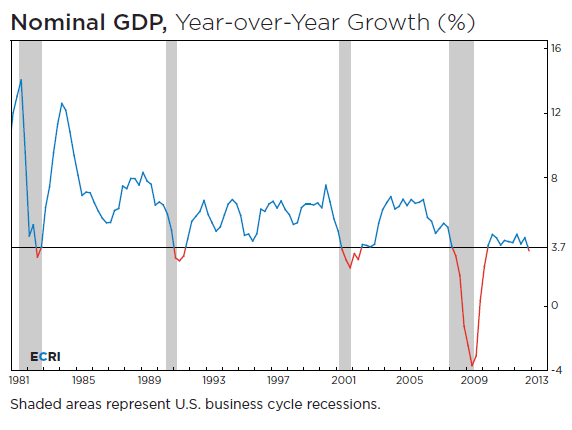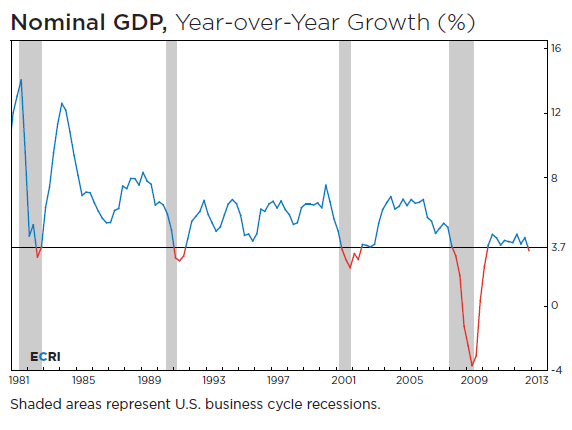Global View Investment Blog
Stocks Missed a Bear Market in 3 of the Last 15 Recessions but in Each Instance Valuations Were Much Lower
ECRI published a report yesterday reaffirming their view that a new recession started mid-year 2012. In this report they show that about 20% of the time (3 of the last 15 recessions) the stock market either rose or did not fall 20% (the key “bear” market threshold) from onset of recession to subsequent economic expansion period. Specifically, the stock market:
- Rose during the 1926-1927 recession. During this period the Shiller PE (a measure of cyclically adjusted price to earnings using 10 years of data) rose from a level of 11 early in 1926 to 19 at the end of 1927. Valuations rose despite falling earnings and stocks continued to rise until their plummet in 1929.
- Rose during the 1945-1946 recession. During this period the Shiller PE trended up from 11-16 before falling to 9 in 1949 when the DJIA fell 24% from the onset of this recession.
- Fell 17% at the onset of the 1980 recession. During the 1980-1981 period the Shiller PE wobbled in the 8-9 range during this mild recession. Stocks rose after the initial drop and continued rising only to fall again at the onset of the next double-dip recession in late 1981, but not to levels below onset of the 1980 recession.
We believe it is noteworthy that stock prices continued to trend upward, without falling below the value of recession onset, only following the recession of 1980, when the Shiller PE was at 8! During this period, Shiller PEs have trended up from 20 to over 22. While we hesitate to make hasty comparisons, clearly the most analogous period is the 1926-1927 period!
Please go to the link below to see ECRI’s explanation of why they continue to believe we are in recession, albeit likely a mild one. http://ecri-prod.s3.amazonaws.com/downloads/ECRI_1303_US_Business_Cycle.pdf

Written by Ken Moore
Ken’s focus is on investment strategy, research and analysis as well as financial planning strategy. Ken plays the lead role of our team identifying investments that fit the philosophy of the Global View approach. He is a strict adherent to Margin of Safety investment principles and has a strong belief in the power of business cycles. On a personal note, Ken was born in 1964 in Lexington Virginia, has been married since 1991. Immediately before locating to Greenville in 1997, Ken lived in New York City.
Are you on track for the future you want?
Schedule a free, no-strings-attached portfolio review today.
Talk With Us






